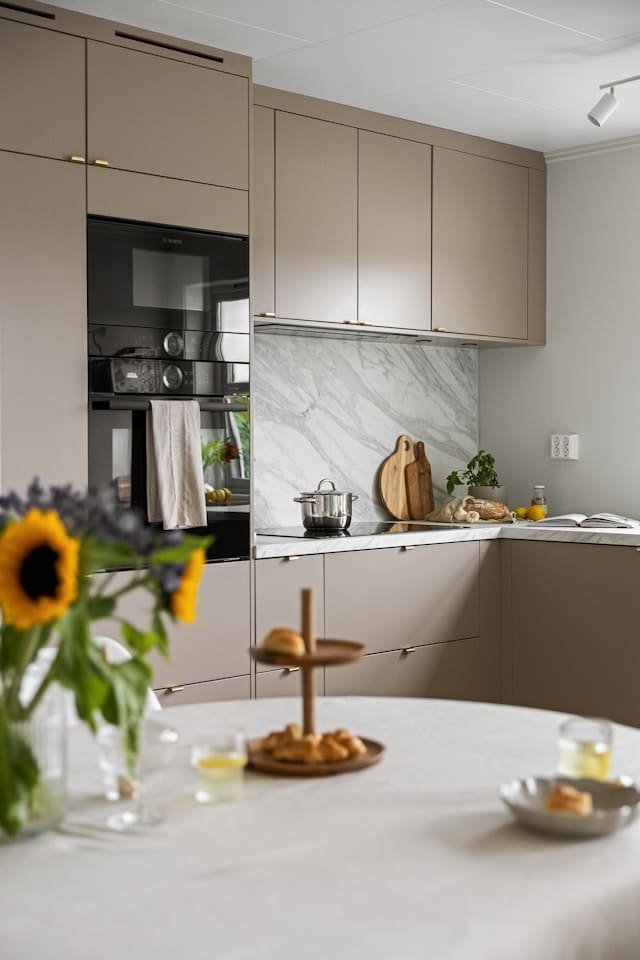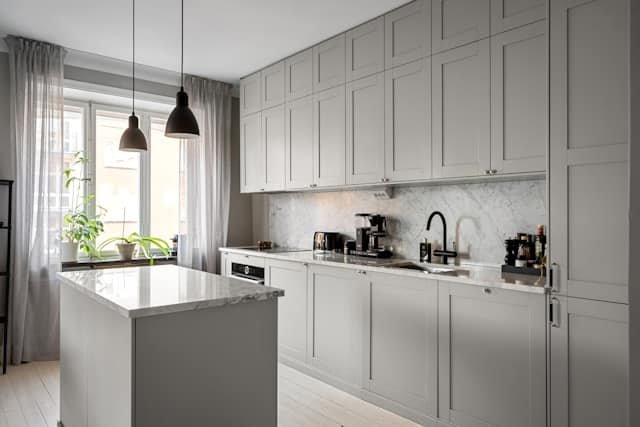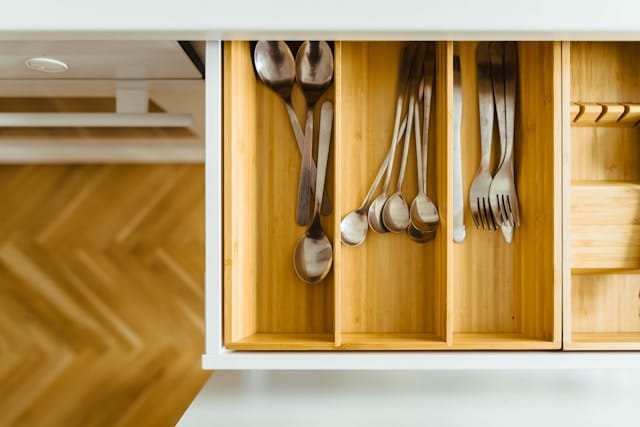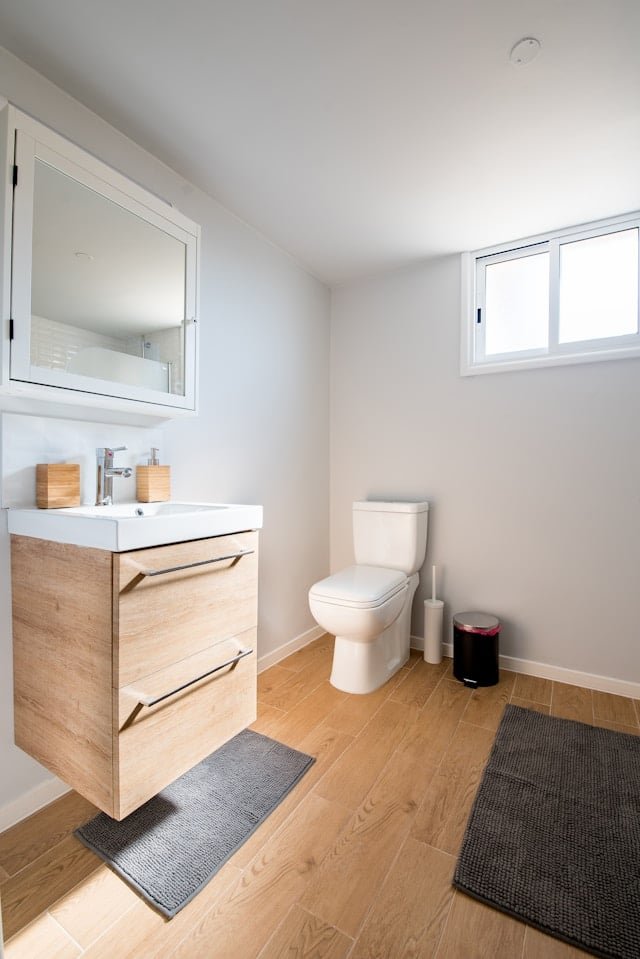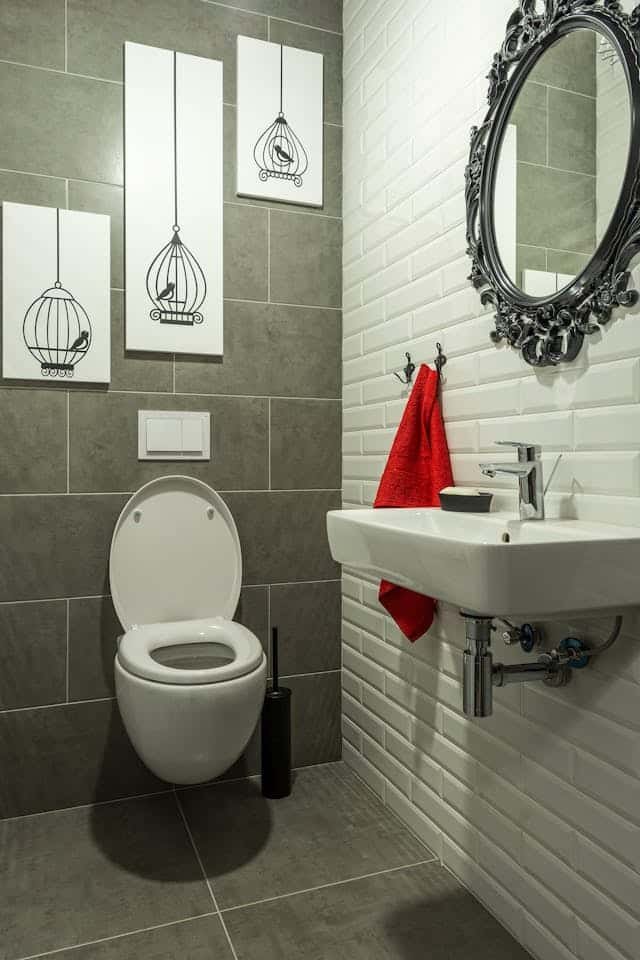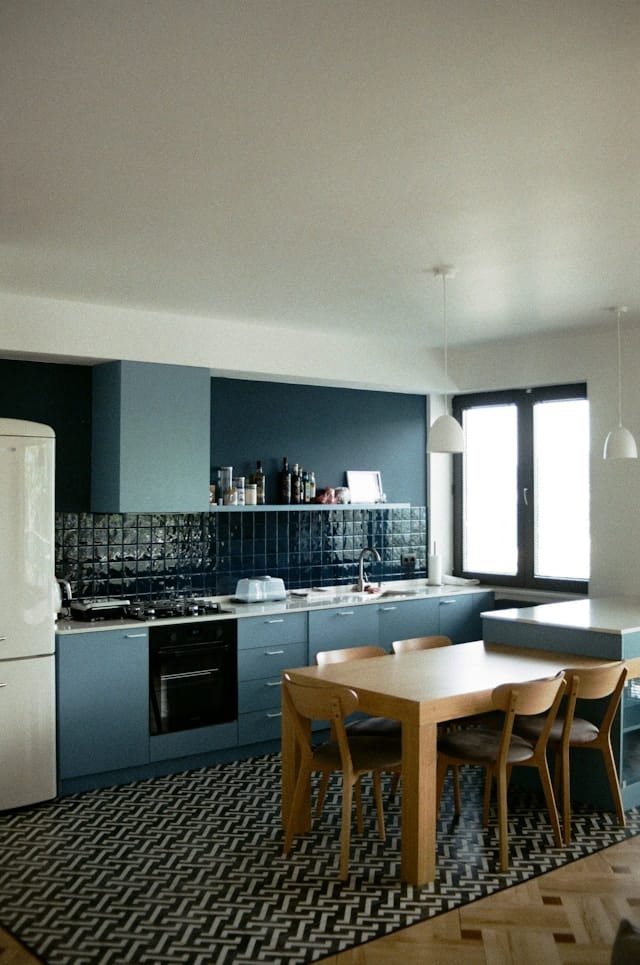How to Clean Painted Kitchen Cabinets Without Damaging the Paint
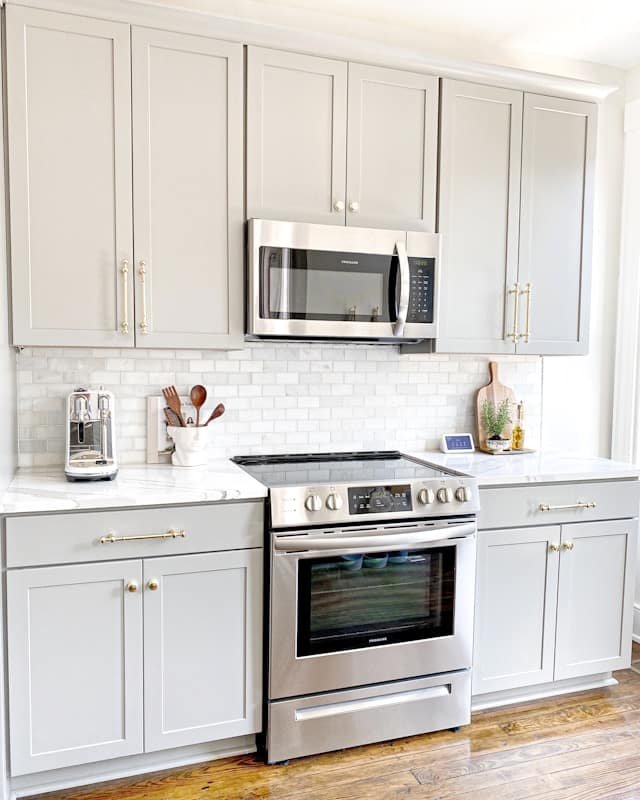
Cleaning painted kitchen cabinets can feel tricky.
You want them to stay looking fresh and clean, but the last thing you want is to damage the paint or leave behind streaks and dull patches.
These cabinets are a big part of your kitchen’s style, so taking care of them properly really matters.
Over time, it’s normal for cabinets to collect grease, dust, food splatters, and fingerprints. The longer that grime sits, the harder it becomes to clean.
But reaching for harsh chemicals or scrubbing too hard can do more harm than good. The goal is to clean effectively while preserving the paint’s smoothness and integrity.
Luckily, with a few simple steps and the right tools, cleaning painted kitchen cabinets can be easy and low-stress.
Whether your cabinets have a matte, satin, or glossy finish, the process is mostly the same.
What matters is using gentle products, soft clothes, and the right technique.
This guide will show you how to keep your painted cabinets in great shape, from quick wipe-downs to more thorough deep cleans.
You’ll learn what to use, what to skip, and how to keep your cabinets looking bright without scrubbing off the paint.
Let’s jump into the best ways to clean your cabinets without causing any damage.
This post may contain affiliate links!
10 Steps to Clean Painted Kitchen Cabinets Without Damaging the Paint
Tools and Products Needed
- Microfiber cloths
- Soft-bristled toothbrush
- Mild dish soap
- Warm water
- Small bowl or bucket
- Spray bottle
- Dry soft towel
- Vacuum with brush attachment
- Soft duster
- Furniture enhancing polish or cabinet conditioner (optional)
- Latex or rubber gloves (optional)
1. Use a Soft Microfiber Cloth to Remove Dust and Debris First
Begin by wiping your cabinets with a soft microfiber cloth to remove any dust, crumbs, or loose particles.
These clothes are gentle on painted surfaces and help avoid scratches or damage.
Stay away from abrasive tools like rough sponges or steel wool, which can harm the paint finish.
2. Dilute Mild Dish Soap in Warm Water
In a small bowl or bucket, combine a few drops of mild dish soap with warm water to create a safe cleaning solution.
This mix is gentle enough for painted surfaces but still effective at loosening grease, grime, and sticky residue.
Ensure the soap is well diluted to prevent streaks. Avoid any harsh chemicals that could damage the paint.
3. Test the Solution on a Hidden Spot
Before cleaning the entire surface, apply the solution to a small, hidden area like the inside edge of a cabinet door.
Let it sit for a few minutes, then wipe gently and check for any discoloration, fading, or paint damage.
If the paint stays intact, it’s safe to continue. This quick test can prevent accidental damage to your cabinets.
4. Wipe Cabinets Gently, Working Top to Bottom
Dip your microfiber cloth into the soapy solution, wring it out well, and start wiping the cabinets from the top down.
This method prevents dirty water from dripping onto already cleaned surfaces.
Use gentle, circular motions to avoid damaging the paint while still lifting away dirt.
5. Focus on Greasy or Stained Areas with a Second Pass
For spots with grease buildup or food stains, go over the area again using a fresh section of the cloth or dip it back into the cleaning solution.
Apply a bit more pressure, but still keep it gentle.
Stubborn spots may need a second or third pass, especially around handles and stovetop-adjacent cabinets.
6. Use a Soft-Bristled Toothbrush for Crevices and Corners
Dip a soft-bristled toothbrush into the soapy solution to reach tight corners, edges, and grooves.
These areas often collect grease and dust that clothes can’t reach. Gently scrub in a circular motion to lift grime without scratching the paint.
Wipe clean with a damp cloth afterward to remove residue.
7. Rinse the Cloth and Wipe Again with Clean Water
After cleaning with the soapy solution, rinse your microfiber cloth thoroughly with clean, warm water.
Wipe the cabinets again to remove any leftover soap or residue.
This step is important to prevent dullness or streaks on the painted surface. Always use a soft cloth to maintain the cabinet’s finish.
8. Dry Cabinets Immediately with a Soft Towel
After completing the rinsing process, it is essential to dry the cabinets immediately using a soft, lint-free towel or microfiber cloth.
This step prevents water stains, mitigates the risk of moisture damage, and helps preserve the integrity of the paint finish.
Particular attention should be given to seams, edges, and hinge areas where moisture tends to accumulate.
9. Avoid Harsh Cleaners or Abrasive Tools
Avoid using harsh chemical agents such as bleach or ammonia, as well as abrasive cleaning tools like steel wool or scouring pads.
These materials can cause discoloration, scratches, and even peeling of the paint.
Use only mild, non-abrasive cleaners and soft tools specifically suited for painted surfaces to ensure long-term durability and appearance.
10. Clean Hardware Separately
Take off the cabinet knobs, handles, and pulls before cleaning.
This avoids trapping grime or moisture around the hardware.
Wash them in warm, soapy water using a soft cloth or sponge. Dry thoroughly and reattach once the cabinets are clean.
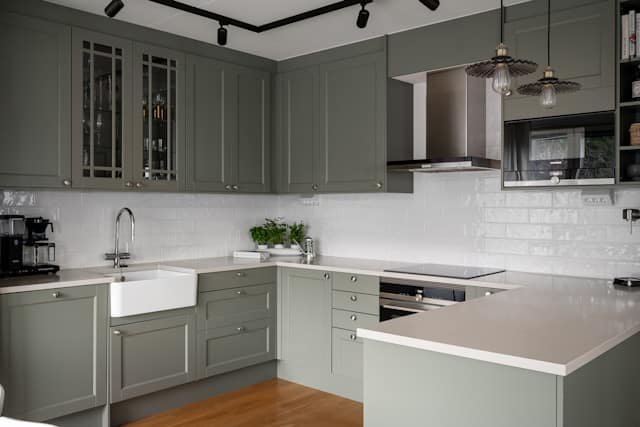
Additional Steps
1. Polish or Condition the Finish Occasionally (If Recommended)
If your cabinet type allows it, use a paint-safe polish or conditioner to maintain its finish.
It helps protect against dust and grease buildup. Always check manufacturer guidelines first.
Test any product on a hidden spot before applying it fully.
2. Keep Cabinets Clean with Weekly Maintenance Wipes
Wipe down painted kitchen cabinets weekly using a damp microfiber cloth or gentle cleaning wipe.
This prevents dust, grease, and food splatters from building up.
Regular light cleaning reduces the need for deep scrubbing. It also helps preserve the paint finish longer.
3. Handle Spills and Splatters Quickly
Always clean spills immediately before they harden or stain.
Use a soft, damp cloth to blot the area instead of rubbing.
Dried food, sauces, or oils can damage painted surfaces. Quick action helps keep cabinets looking fresh and spotless.
4. Maintain Good Ventilation to Reduce Grease Build-up
Turn on the kitchen exhaust fan or open a window while cooking.
This helps control moisture and airborne grease.
Proper ventilation minimizes sticky buildup on cabinets. It also protects the paint from long-term damage caused by steam and heat.
Final Thoughts
Keeping painted kitchen cabinets clean doesn’t require harsh chemicals or scrubbing.
The key is to use gentle tools, like a microfiber cloth and a diluted dish soap solution, to safely remove grease and grime.
Always test cleaners on a hidden area first and work from top to bottom, rinsing and drying immediately to protect the paint.
Maintain cabinets with weekly wipes, quickly handle spills, and improve ventilation in your kitchen to prevent buildup.
With these small habits, your cabinets will stay fresh, clean, and beautiful for years.
Read more:
- 20 Surprisingly Easy Bathroom Cleaning Hacks That Leave No Dirt Behind
- 20+ Practical Kitchen Cleaning Hacks That Go Way Beyond the Basics
- How To Organize Your Room And Always Keep It That Way
- 15 Shockingly Simple Habits Of People Who Keep Their House Clean All The Time
- 25+ Effective Cleaning Hacks You Won’t See All Over the Internet
